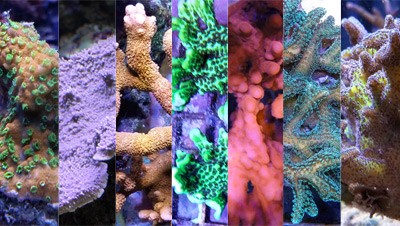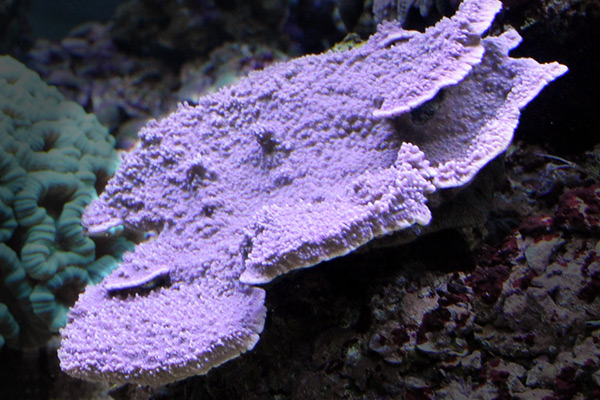Upon entering the world of small polyp stony corals (or SPS), many people ask the magic question, “Which types are best for beginners?” In my opinion the most beginner-friendly choices are found in the genera Montipora, Pocillopora, Seriatopora, and Stylophora. Most of the corals I’ll discuss here are commonly available, so there should be a low cost of entry. They’ve also proven fairly hardy in my experience and can be kept in a wider range of parameters than most SPS corals. What’s more, they’re rarely susceptible to the dreaded rapid or slow tissue necrosis (RTN/STN) that you see in Acropora species.
General requirements for these SPS corals
- Care level: moderate
- Temperament: peaceful (will not try to attack neighboring corals but will most likely lose to aggressive species)
- Lighting: moderate to high (of the correct full spectrum)
- Flow: medium to high
- Temperature: 72-78F
- Alkalinity: 8-12 dKH
- pH: 8.1-8.4
- Specific gravity: 1.023-1.025
Preparing for SPS
The ultimate practice for these corals is mastering water parameter stability. Don’t chase specific numbers, but if you can keep parameters in the required ranges and stable with very little variance and spikes, you can keep practically any coral. The only other specifics to each coral are placement, which impacts lighting; flow requirements; and whether they need to be fed. These are primarily photosynthetic corals, but additions of amino acids and other elements may help with coloration and growth.
Precautions
As with all new livestock, dipping and quarantining corals prior to placing them in your system is an excellent practice, even for these hardy SPS. I dip all my SPS/LPS corals with an off-the-shelf formula, iodine, or a DIY concoction found on the web. Though these are hardy, there are some unique pests to watch out for, particularly if you’re keeping Montipora, which are vulnerable to Montipora-eating nudibranchs (as compared to the red/black bugs or flatworms frequently found on Acropora species).
Montipora
The easiest SPS, in my opinion, are in the Montipora genus, which includes several different-shaped varieties that are commonly found in the aquarium trade. The ones I didn’t list are usually harder to find, so this isn’t a comprehensive list of Montipora species.
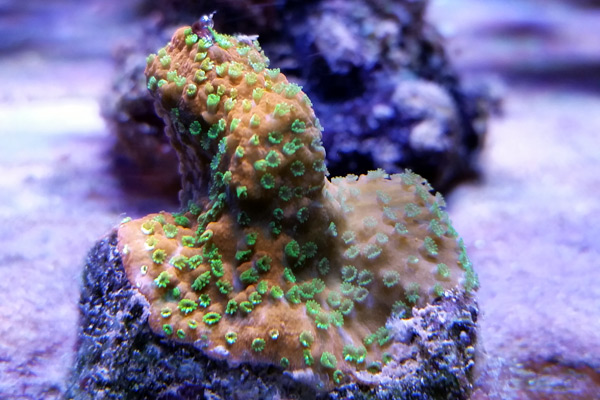
Montipora danae/confusa/undata. These are encrusting types of Montipora, like my Sunset Monti below. The major difference between the danae and the confusa/undata is that it has deeper ridges and folds and a colored rim around a more uniform color.
Montipora capricornis is a plating type that can grow into spiraling plates and comes in many colors, including red, green, and purple.
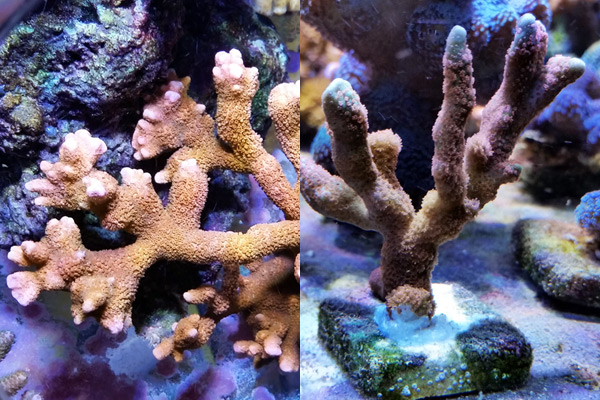
Montipora digitata is a branching or finger-like coral that can easily satisfy the sophisticated look of branching Acropora but with a greater level of hardiness. Two color types are shown below, peach on the left and “Forest Fire” on the right.
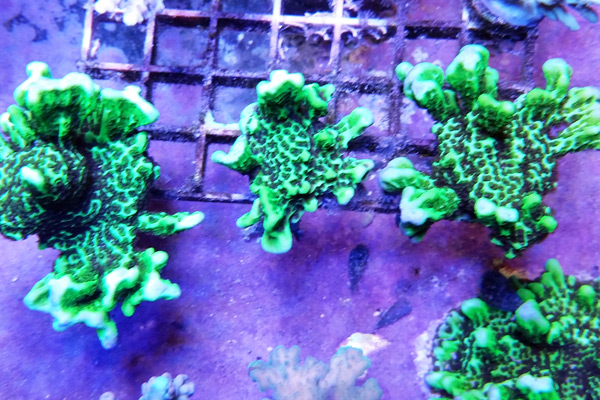
Montipora spongodes seems to have it all. It comes in encrusting, plating, and even French-fry-shaped branching forms with darker polyps. This is particularly hardy in my tank and grows fast.
Montipora setosa used to be highly desirable in its day. This species encrusts and has round branches with a uniform red/pink base and polyp color.
Pocilloporidae family
Another group of corals that will thrive with fairly moderate care consists of the “bird’s nest” forms belonging to the genera Pocillopora, Seriatopora, and Stylophora. These are fast growers and a little more aggressive in temperament, so proper spacing between specimens is a must.
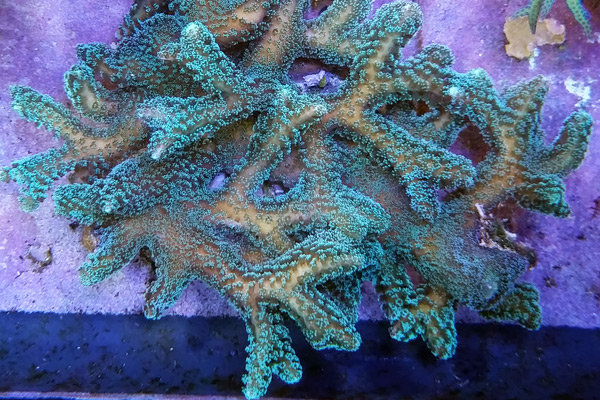
Pocillopora damicornis, the green simple bird’s nest, is very common and needs high flow and intense lighting to maintain specific colors.
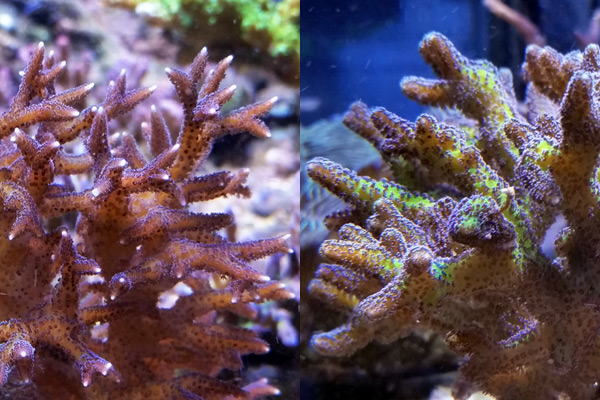
Seriatopora hystrix—the common, popular specimens available these days include the “Ponape Bird’s Nest,” “Bird of Paradise,” and “Pink Bird’s Nest.” With high flow and proper alkalinity and calcium, these corals will maintain their pointy tips.


